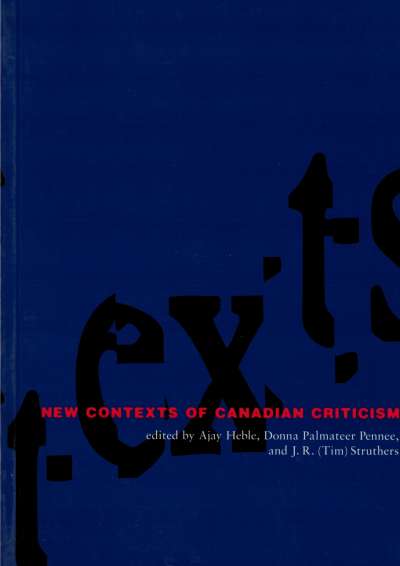
Arthur Conan Doyle’s second Sherlock Holmes novel is both a detective story and an imperial romance. Ostensibly the story of Mary Morstan, a beautiful young woman enlisting the help of Holmes to find her vanished father and solve the mystery of her receipt of a perfect pearl on the same date each year, it gradually uncovers a tale of treachery and human greed. The action audaciously ranges from penal settlements on the Andaman Islands to the suburban comfort of South London, and from the opium-fuelled violence of Agra Fort during the Indian ‘Mutiny’ to the cocaine-induced contemplation of Holmes’ own Baker Street.
This Broadview Edition places Doyle’s tale in the cultural, political, and social contexts of late nineteenth-century colonialism and imperialism. The appendices provide a wealth of relevant extracts from hard-to-find sources, including official reports, memoirs, newspaper editorials, and anthropological studies.
Comments
“In this erudite and provocative edition, Shafquat Towheed offers fans of both Sherlock Holmes and Arthur Conan Doyle an intricate account of the intertextual histories at the heart of The Sign of Four. Arguing for the inextricability of its colonial plots with its work as detective fiction, Towheed builds a persuasive case for The Sign of Four as Mutiny fiction, positioning it as pivotal to the imperial career of ‘British’ fiction per se. Readers of this edition will be gripped by the colonial pathways Towheed reveals, the politics of citation he uncovers, and the entanglement of home and empire he tracks in the making of the novel. This is postcolonial interpretation at its very best.” — Antoinette Burton, University of Illinois, Urbana-Champaign
Acknowledgements
Introduction
Arthur Conan Doyle: A Brief Chronology
A Note on the Text
The Sign of Four
Appendix A: Domestic Contexts
- From Havelock Ellis, The Criminal (1890)
- From Cesare Lombroso, The Man of Genius (1891)
Appendix B: Colonial Contexts: Accounts of the Indian “Mutiny,” 1857–58
- From Sir William Muir, Agra in the Mutiny and the Family Life of W. & E.H. Muir in the Fort, 1857: A Sketch for
their Children (1896)
- From Sir William Muir, Agra Correspondence during the Mutiny (1898)
- From James P. Grant, The Christian Soldier: Memorials of Major-General Sir Henry Havelock (1858)
- From Rev. Frederick S. Williams, General Havelock and Christian Soldiership (1858)
- From Mrs. R.M. Coopland, A Lady’s Escape from Gwalior and Life in Agra Fort during the Mutinies of
1857 (1859)
- From Sir J.W. Kaye and G.B. Malleson, The History of the Indian Mutiny of 1857–8 (1888–89)
Appendix C: Colonial Contexts: The First and Second Anglo-Afghan Wars
- From Sir Henry Havelock, Narrative of the War in Affghanistan, 1838–9 (1840)
- From Lady Florentia Sale, A Journal of the Disasters in Affghanistan, 1841–2 (1843)
- From J.W. Kaye, History of the War in Afghanistan. From the Unpublished Letters and Journals of Political and
Military Officers Employed in Afghanistan throughout the Entire Period of British Connexion with that Country (1851)
- From “The Murder of Lord Mayo,” The Times (15 April 1872)
Appendix D: Colonial Contexts: The Andaman Islands
- “The Andaman Islands, A Penal Settlement for India,” letter to the editor of The Times (11
November 1857)
- From Frederic J. Mouat, Adventures and Researches Among the Andaman Islanders (1863)
- From the Annual Report on the Settlement of Port Blair and the Nicobars for the Year 1872–3 (1873)
- From “The Andamans Penal Settlement,” The Times (13 February 1872)
- From “The Andaman Settlements: From Our Own Correspondent,” The Times (26 December 1873)
- From the Annual Report on the Settlement of Port Blair and the Nicobars for the Year 1873–4 (1874)
- From Edward Horace Man, On the Aboriginal Inhabitants of the Andaman Islands (1884)
- From Maurice Vidal Portman, A History of Our Relations with the Andamanese. Compiled from Histories and Travels,
and from the Records of the Government of India (1899)
Appendix E: Contemporary Reviews
- Anon., “Magazines for February,” Liverpool Mercury (5 February 1890)
- Anon., “Notes on Novels,” Dublin Review (April 1890)
- Anon., “Novels of the Week,” The Athenaeum (6 December 1890)
- Anon., “New Novels,” The Academy (13 December 1890)
- Anon., “A Batch of Novels,” Liverpool Mercury (24 December 1890)
- Anon., “New Novels,” The Graphic (7 February 1891)
- Anon., “Review of Books,” The Cape Illustrated Magazine (1 October 1894)
- Anon., The Cape Illustrated Magazine (1 November 1894)
- From Andrew Lang, “The Novels of Sir Arthur Conan Doyle,” The Quarterly Review (July 1904)
Select Bibliography
Shafquat Towheed is a Lecturer in English at the Open University, UK.














